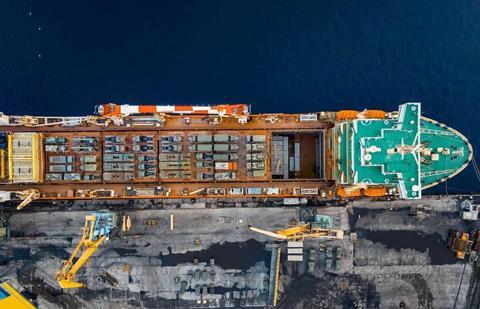A strike by the International Longshoremen’s Association (ILA) is set to go ahead at 12:01 am on Tuesday, October 1, as talks between the dockworkers union and the United States Maritime Alliance (USMX) employer group seem deadlocked.

If 85,000 workers across 36 ports across the USA East Coast and the Gulf of Mexico halt work at ports reaching from Maine to Texas, this would amount to the first coastwide strike since 1977.
The strike threat comes as the two parties remain at an impasse over wage issues ahead of a September 30 deadline to reach a new contract deal. The current six-year agreement covers approximately 25,000 port workers employed in container and ro-ro operations at ports along the Atlantic and Gulf coasts.
According to the union, USMX refuses to address a ”half-century of wage subjugation where ocean carriers’ profits skyrocketed from millions to mega-billion dollars, while ILA longshore wages remained flat”. Last week, USMX filed an unfair labour practice charge with the National Labor Relations Board to resume bargaining and bring the ILA back to the negotiating table. According to Freightos, the ILA and USMX have not met face-to-face since June and remain far apart on key issues like wage increases and port automation.
Negotiations were suspended earlier this year over the proposed new labour contract with USMX. The ILA said the talks were cancelled following the introduction of automated technology at APM Terminals (APMT) and to process trucks at ports.
Despite the government refusing to end the strike via the Taft-Hartley Act, various shipper associations have reached out to the White House asking the administration to intervene and avoid potential disruptions.
US ports are gateways for a large portion of North America’s trade,” said Han Deng, transportation partner at law firm Reed Smith. “The port of New York and New Jersey will be among those affected if the strike occurs. According to non-profit research group Mitre, the port of New York and New Jersey could see a daily loss of around USD640 million.”
In 1977, a similar-sized strike paralysed ports for 44 days. Deng added that a one-day strike by the ILA would take five days to clear. ”The effect of such a strike could last long even after it is resolved, with the disruptions mentioned above taking weeks or months to recover, in a high inflation economy with regional conflicts and geopolitical uncertainty.”
Peter Sand, chief analyst at Xeneta, said: “There are ships on the ocean right now carrying billions of dollars of cargo heading to ports on the US East and Gulf Coast. These ships cannot turn back and they cannot realistically re-route to the US West Coast. Some may divert to ports in Canada or even Mexico East Coast, but the vast majority will simply wait outside affected ports until the workers return.
“The consequences will be severe, not only through congestion at US ports, but importantly these ships will be delayed returning to the Far East for the next voyage. A strike lasting just one week will impact schedules for ships leaving the far east on voyages to the US in late December and throughout January.”
He added that more than 40 percent of total containerised goods enter the US through ports on the East Coast and Gulf Coast, “so the stakes could not be higher”. He called on government intervention to avoid further disruption. ”Last week, 177 trade associations called for an immediate resumption of negotiations because they recognise the extremely serious consequences of strike action on the US economy. Government intervention should be seen as a strength in the system, because it will prevent a dispute between a smaller group of interests – whether that is dockworkers or port terminal owners – from significantly impacting the wealth of the entire nation.
”If the parties cannot solve the dispute themselves then someone needs to solve it for them because closing the US East and Gulf coasts to trade for a prolonged period of time would be toxic for supply chains and the economy.”
Most container shipping lines have released strike/port disruption surcharge notices, with implementation dates ranging October 1-19. The costs vary from approximately USD1,600-3,000 per 40 ft container.
















